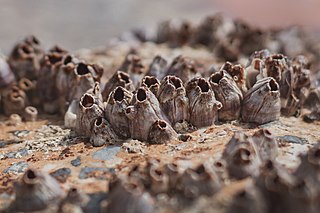
Balanus is a genus of barnacles in the family Balanidae of the subphylum Crustacea.

Thoracica is an infraclass of crustaceans which contains the most familiar species of barnacles found on rocky coasts, such as Semibalanus balanoides and Chthamalus stellatus. They have six well-developed limbs, and may be either stalked or sessile. The carapace is heavily calcified. The group includes free-living and commensal species.

Thecostraca is a class of marine invertebrates containing over 2,200 described species. Many species have planktonic larvae which become sessile or parasitic as adults.

The Balanidae comprise a family of barnacles of the order Balanomorpha. As a result of research published in 2021 by Chan et al., the members of the family Archaeobalanidae were merged with this family.

The Balanomorpha are an order of barnacles, containing familiar acorn barnacles of the seashore. The order contains these families:

Megabalanus is a genus of barnacles in the family Balanidae. Members of the genus grow to 7 cm (2.8 in) in length and inhabit the lower intertidal zone.

Chthamalus is a genus of barnacles that is found along almost all non-boreal coasts of the northern hemisphere, as well as many regions in the southern hemisphere. These small barnacles have been studied in part because of the taxonomic confusion over a group of species that, by and large, are morphologically and ecologically quite similar. In recent years, molecular techniques have identified a number of cryptic species that have been subsequently confirmed by taxonomists using morphological measurements. Most recently the genus has been shown to be paraphyletic, with the genus Microeuraphia nested within Chthamalus.
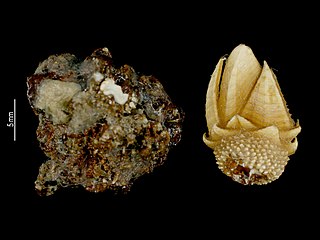
Calanticidae is a family of acorn barnacles in the order Calanticomorpha. There are about 12 genera and more than 60 described species in Calanticidae.
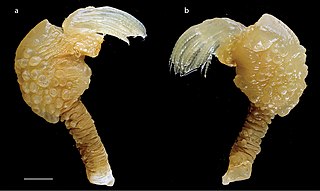
Paralepas is a genus of goose barnacles in the family Heteralepadidae.

Scalpellidae is a family of acorn barnacles in the order Scalpellomorpha. There are about 25 genera and 220 described species in Scalpellidae.
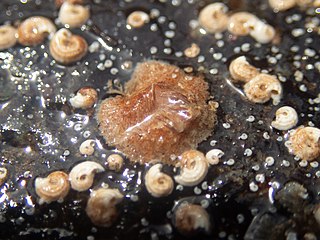
Verrucidae is a family of asymmetrical sessile barnacles in the order Verrucomorpha. There are about 14 genera and more than 90 described species in Verrucidae.
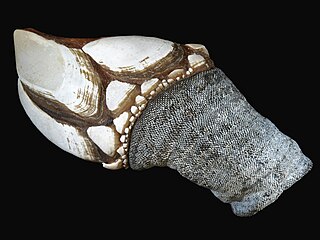
Scalpellomorpha is an order of acorn barnacles in the class Thecostraca. There are about 11 families in 3 superfamilies and more than 450 described species in Scalpellomorpha.
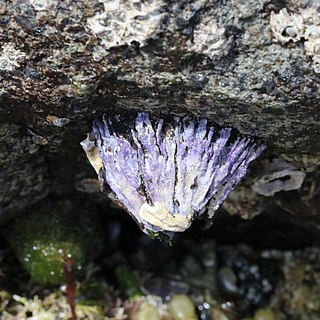
Austrobalanus is a genus of symmetrical sessile barnacles in the family Austrobalanidae, the sole genus of the family. There are at least three described species in Austrobalanus.
Iblomorpha is a small order of barnacles in the class Thecostraca. There are only two families and about eight described species in Iblomorpha. In this group we find barnacles that use calcium phosphate in their shell, and species that protect themselves against predators with poison.

Calanticomorpha is an order of acorn barnacles in the class Thecostraca. There are 3 families and more than 90 described species in Calanticomorpha.

Verrucomorpha is an order of asymmetrical sessile barnacles in the class Thecostraca. They are typically found in deeper and deep-sea habitats. There are 2 families and more than 100 described species in Verrucomorpha.

Epopella is a genus of symmetrical sessile barnacles in the family Tetraclitidae. There are about six described species in Epopella.

Notomegabalanus is a genus of acorn barnacles in the family Balanidae. There are about 12 described species in Notomegabalanus.

Chionelasmus is a genus of symmetrical sessile barnacles in the family Chionelasmatidae. There are at least two described species in Chionelasmus.

















